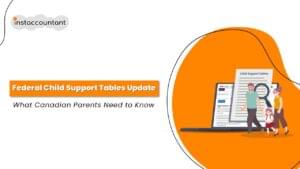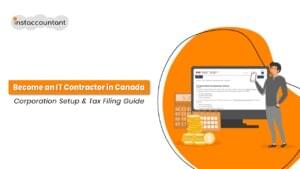As an Uber driver in Canada, understanding the rules surrounding GST/HST registration can be one of the most confusing aspects of managing your taxes. Whether you’re a rideshare driver providing Uber services or delivering meals through Uber Eats (DoorDash, Instacart), the Canada Revenue Agency (CRA) has specific rules that you need to follow. Let’s break down the GST/HST registration obligations for both rideshare and delivery drivers so you can stay compliant and avoid unnecessary headaches.
The Key Difference: Rideshare vs. Delivery
Before diving into the details, it’s important to understand the critical difference between rideshare and delivery services when it comes to GST/HST registration. While both involve providing services through Uber, the tax treatment for each is different.
1. Rideshare (Uber, Lyft, etc.):
If you’re driving for Uber (or any similar rideshare platform), you’re offering a taxable transportation service, and GST/HST registration is required from day one.
This rule applies even if your earnings are under $30,000. The small supplier exception doesn’t apply to rideshare drivers, meaning you need to collect GST/HST from your first fare.
Why? The CRA classifies rideshare services as taxable transportation services, and they are subject to GST/HST, irrespective of the total revenue you earn.
2. Delivery (Uber Eats, SkipTheDishes, etc.):
On the other hand, Uber Eats and other food delivery services fall under the small supplier exception. You do not need to register for GST/HST until your total revenue exceeds $30,000 over four consecutive calendar quarters or in a single quarter.
Why? Delivery services are categorized differently by the CRA. They qualify for the small supplier exception until you hit the $30,000 revenue threshold.
GST/HST Registration: What You Should Know
Whether you’re a rideshare or delivery driver, if you’re required to register for GST/HST, here’s a rundown of what you need to do:
1. GST/HST Registration Process:
To become a registrant for GST/HST, you need to get a Business Number from the CRA. It’s easy and fast to do online, over the phone, or by mail. When you are registered, you will get a GST/HST number that you will have to display on your invoices and receipts.
2. Input Tax Credits (ITCs):
One of the key benefits of GST/HST registration is that you can claim Input Tax Credits (ITCs) on any GST/HST you’ve paid on eligible business expenses (e.g., fuel, car repairs, insurance). ITCs can be used to offset the taxes you charge customers, lowering the amount of GST/HST you pay.
3. Net Tax:
As a GST/HST registrant driver, you will calculate your net tax by deducting the ITCs from GST/HST collected. You will thus be only paying the difference to the CRA, rather than paying the full tax collected amount.
4. Filing Frequency:
The frequency of your GST/HST filing (monthly, quarterly, or annually) will depend on your total revenue. If you’re just starting out and your revenue is below the $1.5 million mark, you’ll likely file annually, but larger businesses file more frequently.
Benefits of Voluntary Registration (For Delivery Drivers)
Even though you are not obligated to register for GST/HST as a delivery driver (because you’re under the $30,000 threshold on revenues), there are some very positive advantages of voluntary registration:
Claiming ITCs: Voluntary registration allows you to claim ITCs on expenses for business, such as gas, containers of food, and repairs for your vehicles. It can get your tax back and lower your overall tax burden.
Improved Cash Flow: By claiming ITCs, you’re effectively getting back the taxes you’ve paid on business-related purchases, which can boost your cash flow.
Professional Image: Being registered for GST/HST can also enhance your professional image. It signals that you take your business seriously and comply with tax laws, which builds customer trust.
Important Tax Considerations
To stay compliant and avoid surprises come tax season, here are some key considerations for both rideshare and delivery drivers:
Accurate Record Keeping: Keep detailed records of all your income, expenses, and taxes collected. The CRA will expect you to have organized records, especially when claiming ITCs.
Proper Invoicing: If you’re GST/HST registered, make sure your invoices have the appropriate tax amounts and include your GST/HST registration number.
Timely Tax Filing: Missing GST/HST filing deadlines can result in penalties and interest. Ensure timely filing of your returns, as per your prescribed frequency.
Seek Professional Advice: Tax rules for Uber drivers can be complicated. If you’re unsure about your GST/HST registration obligations or how to maximize your Canadian tax deductions, it’s a good idea to consult with a tax professional who can guide you based on your specific situation.
Stay Compliant With the CRA
Understanding your GST/HST obligations is crucial for both rideshare and delivery drivers. Whether you’re required to register from day one or only when your earnings exceed the $30,000 threshold, it is important to stay CRA compliant in order to avoid penalties and optimize tax benefits. Maintain proper documentation of your earnings and deductible expenses in order to report accordingly.
If you’re unsure about whether you should register, or if you’re already registered and need help navigating the Canadian tax landscape, consulting with an Uber tax accountant can help you stay on track.





